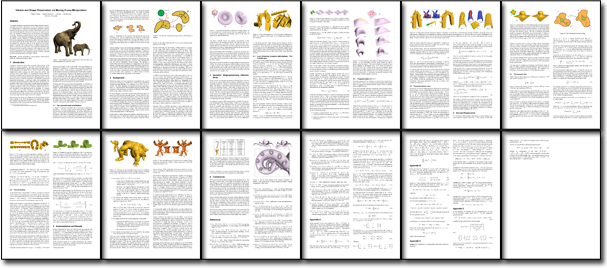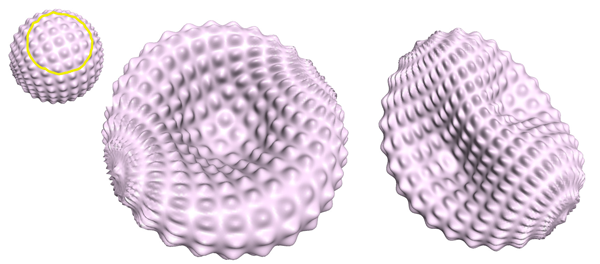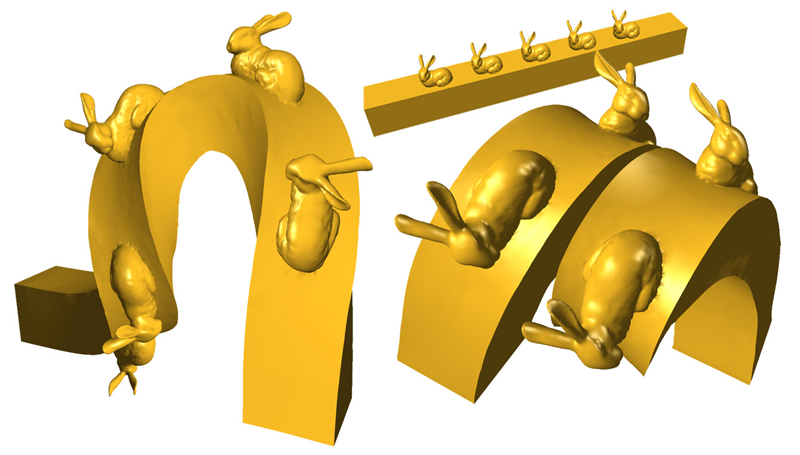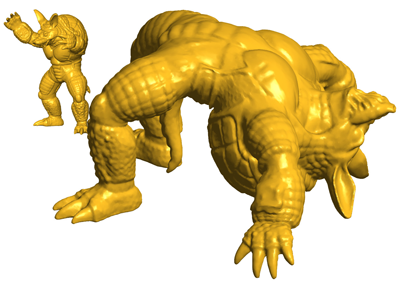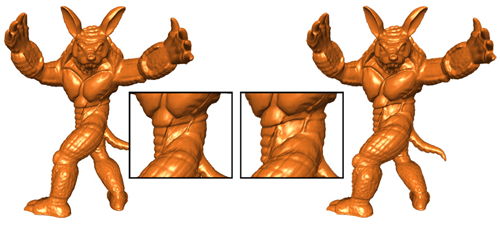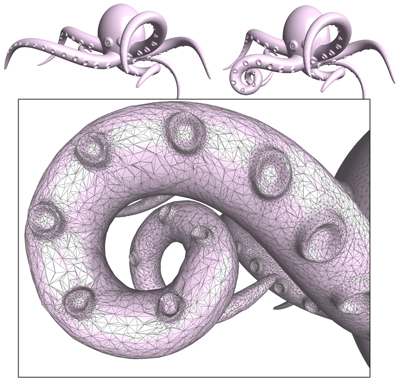|
Volume and Shape Preservation via Moving Frame Manipulation |
||||||||
|
|
||||||||
|
|
||||||||
|
|
||||||||
|
Abstract: |
||||||||
|
|
||||||||
|
This paper introduces a method for mesh editing, aimed at preserving shape and volume. We present two new developments: the first is a minimization of a functional expressing a geometric distance measure between two isometric surfaces. The second is a local volume analysis linking the volume of an object to its surface curvature. Our method is based upon the moving frames representation of meshes. Applying a rotation field to the moving frames defines an isometry. Given rotational constraints, the mesh is deformed by an optimal isometry defined by minimizing the distance measure between the original and the deformed meshes. The resulting isometry nicely preserves the surface details, but, when large rotations are applied, the volumetric behavior of the model may be unsatisfactory. Using the local volume analysis, we define a scalar field by which we scale the moving frames. The scaled and rotated moving frames restore the volumetric properties of the original mesh, while properly maintaining the surface details. Our results show that even extreme deformations can be applied to meshes, with only minimal distortion of surface details and object volume. |
||||||||
|
|
||||||||
|
Technical Report: |
||||||||
|
|
||||||||
|
BibTeX entry: |
||||||||
|
|
||||||||
|
@article{LIPMAN2006, |
||||||||
|
|
||||||||
|
Keywords: |
||||||||
|
surface deformations, moving frames, surface reconstruction, volume preservation, shape |
||||||||
|
|
||||||||
|
More examples: |
||||||||
|
|
||||||||
|
A comparison with the method of Lipman et al.[2005]. In (a) the bar is rotated by just less than pi radians. On the left (a-1) a bar with bunnies is deformed by the technique of Lipman et al.[2005] and by our technique (a-2). Note how the error is evenly distributed by our technique. The colored close-up views (a-3),(a-4) of the bunny head, show the differences in the mean curvature with respect to the original shape. Another example is shown in (b) with a bumpy plane model. |
||||||||
|
||||||||
|
||||||||
|
||||||||
|
A bar with bunnies (a) (110K polygons) is deformed in (b) by two rotations of 3pi/2 each. In (c) a single large rotation of 3pi is applied. |
||||||||
|
||||||||
|
||||||||
|
||||||||
|
||||||||
|
|
||||||||
|
|
||||||||
|
|
||||||||
|
|
||||||||
|
|
||||||||
|
|
||||||||
|
|
||||||||
|
|
||||||||
|
|
